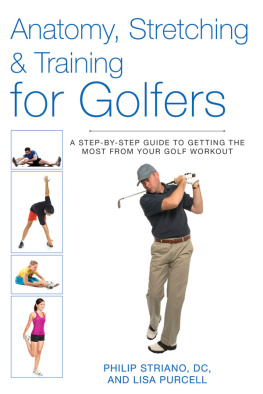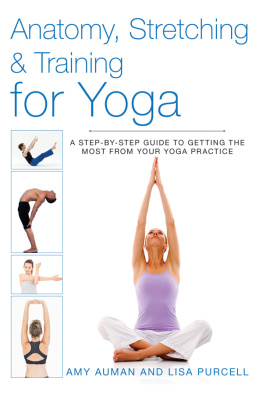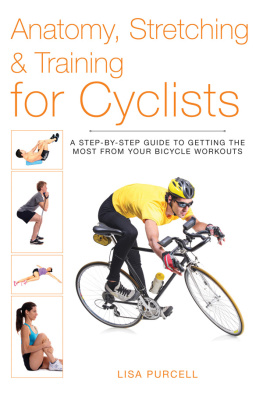Anatomy, Stretching
& Training for Golfers

A Step-by-Step Guide to Getting
the Most from Your Golf Workout
Phil Striano, DC

Skyhorse Publishing
Copyright 2014 by Moseley Road Inc
Photos Copyright 2010 by Jonathan Conklin Photography, Inc.
Produced for Skyhorse Publishing by Moseley Road, Inc. (www.moseleyroad.com)
All Rights Reserved. No part of this book may be reproduced in any manner without the express written consent of the publisher, except in the case of brief excerpts in critical reviews or articles. All inquiries should be addressed to Skyhorse Publishing, 307 West 36th Street, 11th Floor, New York, NY 10018.
Skyhorse Publishing books may be purchased in bulk at special discounts for sales promotion, corporate gifts, fund-raising, or educational purposes. Special editions can also be created to specifications. For details, contact the Special Sales Department, Skyhorse Publishing, 307 West 36th Street, 11th Floor, New York, NY 10018 or info@skyhorsepublishing.com.
Skyhorse and Skyhorse Publishing are registered trademarks of Skyhorse Publishing, Inc. , a Delaware corporation.
www.skyhorsepublishing.com
10 9 8 7 6 5 4 3 2 1
Library of Congress Cataloging-in-Publication Data is available on file.
ISBN: 978-1-62873-635-9
eISBN: 978-1-62873-994-7
Printed in China
CONTENTS
FRONT

BACK
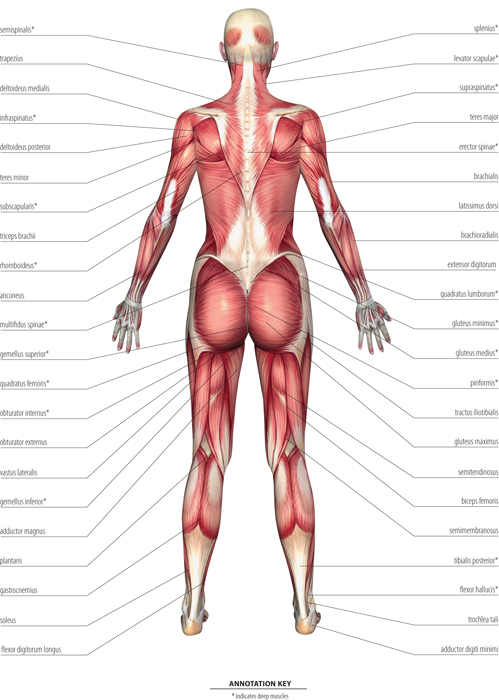
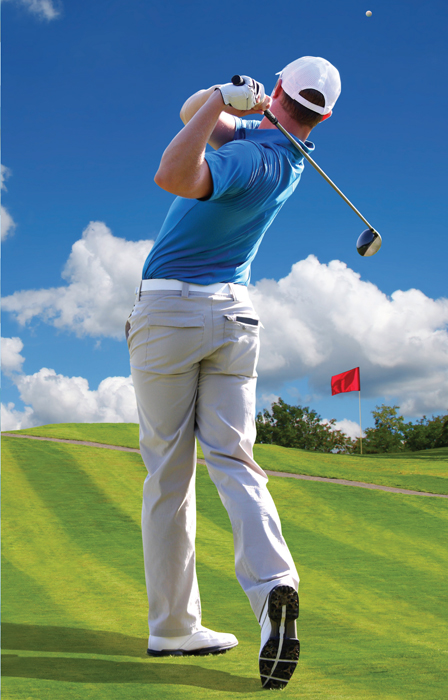
A ll golfers know the joy they can feel playing the game: enjoying time in the sun, the fresh air, and competing against friends or the course. Hitting a long drive down the middle or knocking your approach shot tight are a few of the joys that make you passionate about the game and inspire you to work toward improving your play.
Most players have taken lessons to improve their swings, with PGA-certified golf professionals, playing partners, magazines and through the Internet. Most of these lessons concentrate on the mechanics of the swing itself. The purpose of this book is to give you a better understanding how your golf swing mechanics relate to your bodys biomechanics. In other words, we are going to help you understand the muscles and groups of muscles involved in the golf swing itself. With a better understanding of what your body needs to do during the different phases of the golf swing, you will be better able to train and prepare yourself for the best golf of your life.
As any golfer knows, along with the happiness and confidence that comes along with playing well, frustration and self-doubt come with subpar performances. The goal of this book is to enable you to better understand your body in the swing and play more consistent better golf. Whether you are a beginner to the game or an experienced veteran, you can benefit from stretches that limber up tight muscles, strengthening moves that target your core lower body, and exercises that improve your posture and hone the sense of balance that is so vital to golfing. The exercises in these pages are designed to work a wide range of muscles that come into play when golfing. They can be performed in your living room or office, while striving toward shooting the low round of your life.
GOLF IS A UNIQUE SPORT in that players of varying skill levels, ages and genders can compete against one another on the same course. Golf is also different from most sports in that people of all shapes and sizes cannot only compete in golf but excel at it. Not every person that picks up a set of golf clubs is going to win a championship, but playing confident, reproducible, pain-free and enjoyable golf is a possibility. Golf can be many different things; it can be social, enjoyable or competitive, and it is up to each individual to decide what his or her goals are from this great sport.
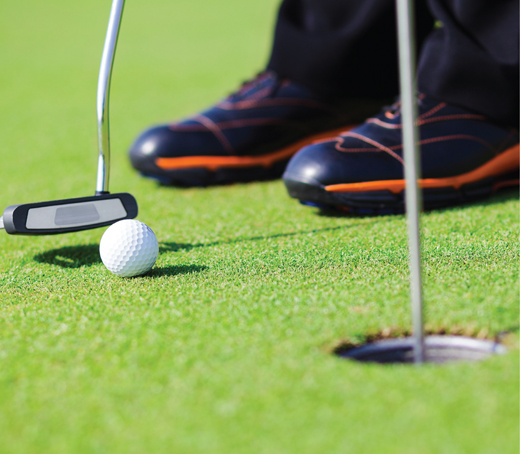
SURPRISE! Golf does have some physical benefits. Regardless of whether you carry your bag for 18 holes or ride in a cart for 18 holes, you will burn calories playing golf. An average-size man carrying his bag for 18 holes will burn approximately 1400 calories. Walking 18 holes with a caddie carrying your bag will burn approximately 1200 calories, and just playing 18 holes while riding in a cart will burn approximately 800 calories. So as long as you watch what you eat and drink at the halfway house, golf can help you lose weight and stay in shape when played frequently.

SAFETY FIRST! Although these safety tips may seem to be common sense for most experienced players, for beginners, it will behoove you to follow these simple rules to avoid injury to yourself or other golfers. Whether warming up on the range or during play on the course, it is of paramount importance to keep in mind your proximity to others. When hitting balls on the range, keep clear space at least four feet in front of you and four feet behind you. This will avoid accidentally striking another person with your club, which can cause severe bodily injury.
Never walk in front of another golfer that has addressed his or her ball. When a player has addressed the ball, he or she will be looking down and will not see you.
Always be aware of your surroundings. Be aware of the group in front of you; do not hit your shot until you are positive that they are not in your range with the club you are hitting. If you do accidentally hit into a group in front of you or to the side of you, make sure you give them an early and loud fore call, which will let them know a ball is coming their way and they should protect themselves. Conversely, if you hear a fore call from another group, take cover and protect yourself from possible ball impact.


Be aware of the group behind you as well! If golfers are constantly waiting on your group to hit their next shot, they may become impatient and hit up on you. So, for best safety practice, keep aware of your surroundings, both in front of you and behind you.

GOLF CAN BE PLAYED in varying weather conditions: extreme heat, cold and everything in between. These various conditions can greatly affect your health, safety and quality of play.
Lightning is the most dangerous and unpredictable weather condition that a golfer faces. One should reach shelter when one hears thunder or sees lightning. If shelter is not available, they need to avoid trees, metal and metal structures that may attract lightening. Most golf courses are now equipped with early warning sirens. Theses warning signals need to be obeyed and shelter sought.
Next page
